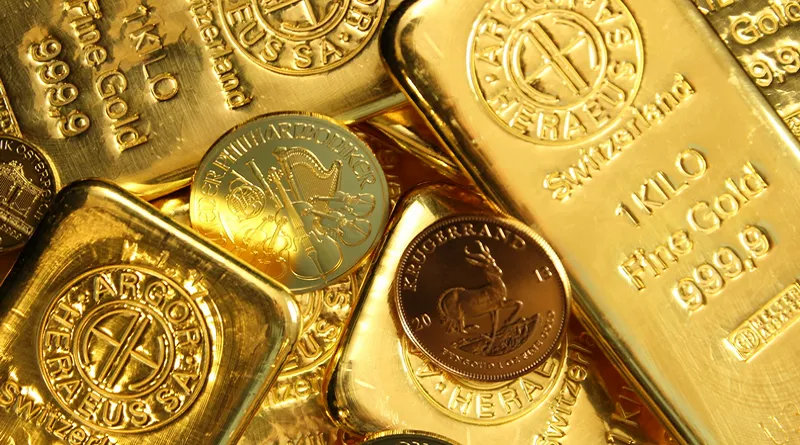Gold, often regarded as a safe haven and a hedge against economic uncertainties, has historically exhibited a tendency to rise during times of market turbulence. However, recent trends have left investors puzzled as gold seems to be experiencing a period of stagnation. In this article, we will delve into the factors contributing to gold’s current lackluster performance and explore the dynamics that might be keeping its prices from surging.
Global Economic Stability:
One crucial factor influencing the price of gold is the overall stability of the global economy. In recent times, major economies have shown signs of recovery from the challenges posed by the COVID-19 pandemic. As economies rebound, investors may be inclined to shift their focus towards riskier assets, such as equities, which can divert attention away from gold. The reduced demand for a safe-haven asset like gold can contribute to its muted performance.
Interest Rates and Inflation Expectations:
The relationship between interest rates and gold prices is well-established. Traditionally, when interest rates are low, the opportunity cost of holding non-interest-bearing assets like gold diminishes, making gold more attractive to investors. Conversely, higher interest rates can lead to a decline in gold prices as the opportunity cost rises. Currently, central banks in some major economies have adopted accommodative monetary policies, keeping interest rates at historic lows. However, the potential for interest rate hikes in the future could be restraining gold’s upward trajectory.
Moreover, inflation expectations play a significant role in shaping gold prices. Inflation erodes the purchasing power of currencies, making gold an attractive store of value. The recent environment of moderate inflation may be contributing to a lack of urgency among investors to flock to gold.
Strength of the US Dollar:
The strength of the US dollar is inversely correlated with gold prices. A stronger dollar makes gold more expensive for investors holding other currencies, potentially dampening global demand. In recent times, the US dollar has shown resilience amid economic recovery, geopolitical uncertainties, and expectations of interest rate adjustments. The dollar’s strength could be acting as a headwind for gold, limiting its ascent.
Equity Market Performance:
Gold is often viewed as a counterbalance to equities, and its demand tends to rise when the stock market faces challenges. Surprisingly, recent bullish trends in global equity markets have not translated into a corresponding surge in gold prices. The strong performance of stocks may be diverting capital away from traditional safe-haven assets like gold, as investors seek higher returns in riskier assets.
Cryptocurrencies as Alternative Investments:
The rise of cryptocurrencies, particularly Bitcoin, has introduced a new dynamic to the investment landscape. Some investors view cryptocurrencies as an alternative to traditional safe-haven assets like gold. The decentralized nature and perceived scarcity of cryptocurrencies appeal to those seeking assets with hedging potential. The increasing popularity of digital currencies may be diverting funds that would have otherwise flowed into gold.
Supply and Mining Challenges:
The gold market is not immune to supply and production challenges. Mining disruptions, regulatory hurdles, and rising production costs can impact the overall supply of gold. In recent years, the gold mining industry has faced obstacles ranging from operational difficulties to environmental concerns. These challenges can limit the influx of new gold into the market, but they may not be sufficient to drive prices significantly higher, especially in the absence of strong demand catalysts.
See Also What Is Highest Price Of Gold In History
Global Geopolitical Developments:
Historically, geopolitical uncertainties and crises have acted as triggers for gold price rallies. However, the current geopolitical landscape, while not devoid of challenges, may not be providing the impetus required for a sustained gold bull run. The absence of acute geopolitical tensions and a perception of relative stability may be keeping investors from flocking to gold as a haven asset.
Conclusion:
While gold’s performance is influenced by a multitude of factors, its current stagnation can be attributed to a combination of global economic stability, interest rate dynamics, the strength of the US dollar, equity market trends, the rise of cryptocurrencies, and supply challenges. Investors should closely monitor these factors, as any significant shift in one or more of these dynamics could potentially reignite interest in gold as a valuable and reliable asset class. As always, a diversified investment strategy that takes into account the evolving market conditions is crucial for navigating the complex landscape of precious metals and financial markets.


